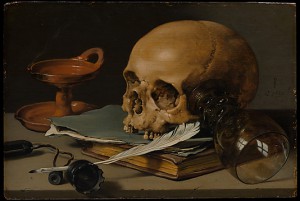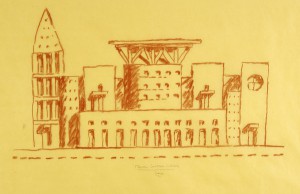Professor Mary Sue Donsky schedules field trips to art museums for students in her LAW 2301 Estates, Wills, and Trusts course. On one recent trip to the Metropolitan Museum of Art, she gave students a tour “Honoring Decedents in Art Across Time and Cultures” that used artifacts from the museum’s collection to highlight funerary-related traditions through history. What’s a decedent? For those unfamiliar with legal lingo, a decedent is a deceased person, a term used mainly in law. During the field trip students were asked to sketch art that honors decedents such as grave markers or ancestor figures, or other examples of related artifacts, including sarcophagi, urns, and reliquaries. Following the trip, students visited museum websites all over the world to “collect” objects for a class blog. Professor Donsky effectively uses the skill of drawing to communicate the historical dimensions of the course. Giving students the opportunity to sketch is a unique way to reinforce and broaden lessons learned in the class room, and suggests that perhaps we should consider drawing to be a Gen Ed skill.
Tag Archives: drawing
Matthew Gold: Is Drawing a Gen Ed Skill?
Some would argue that drawing is as important a skill as reading, writing, speaking, and thinking. In Professor Matthew Gold’s English Composition class Composing Abstractions, students discussed the status of drawing in an assignment. After reading Michael Graves’ “Architecture and the Lost Art of Drawing,” students were asked to summarize the key points and reflect on their reading.
In assignments that took place in the classroom or at home , students were asked to think about architecture in a variety of ways, from “unphotographable moments” or through the lens of an adjective, i.e., “smooth” or “slimy.” Working in groups, students re-imagined and re-invented the Brooklyn skyline. See an example of “futuristic dreams” here.





